Great places, famous faces
When we planned this journey across the northern states of America it had a specific time frame due to us wanting to spend Thanksgiving with family in California. It wasn’t our normal style to have a set timeline but we mapped a rough journey which included a few key spots along the way and headed off. Never did we ever imagine in that planning we would spend five nights in the Dakotas but that’s exactly what happened. This place just had too much to offer.
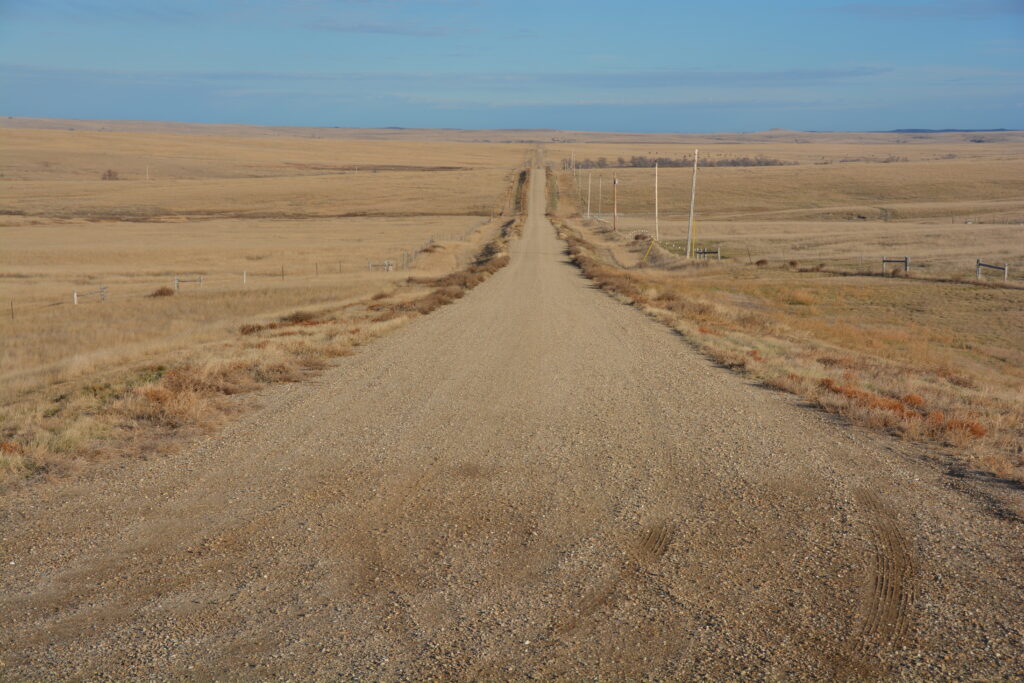
Badlands National Park covers a unique section of the open prairies and grasslands where the soils were eroded and washed away by eons of water draining off the plains until it formed a fantastical wall of sculptured soil and rock with stripes of sedimentary colour. We’ve been to a lot of places but we’ve never seen anything like Badlands National Park.
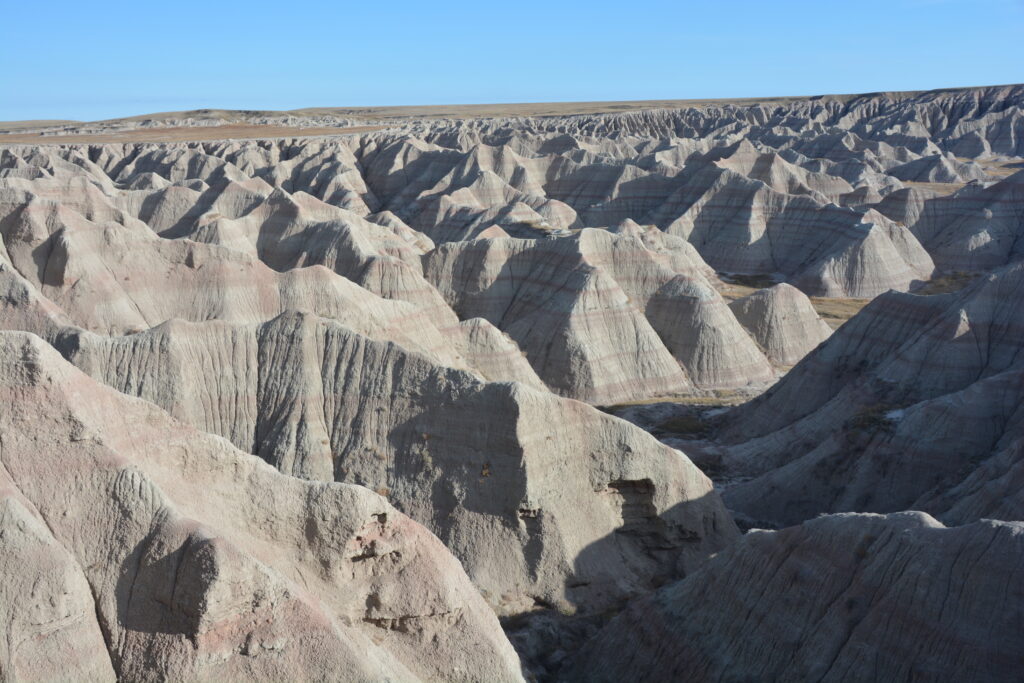
The name badlands came from French trappers in the late 1700’s who said it was bad land to travel across. The local Indian tribes had their own name for the land but the general meaning was the same – this was not friendly territory.
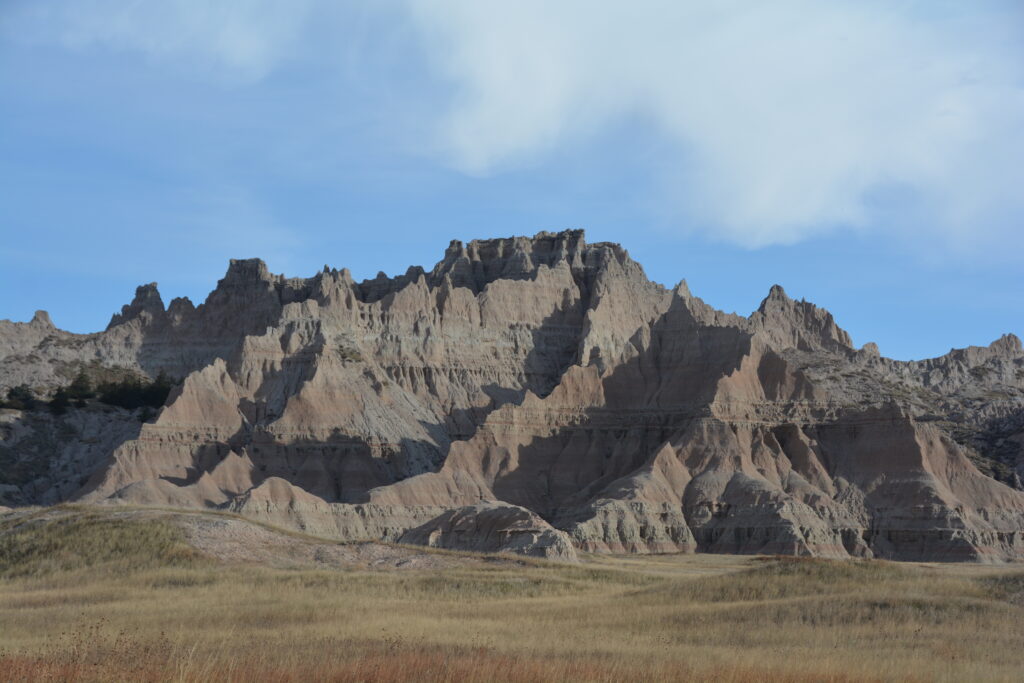
Julie and I spent the morning driving along the scenic road that followed the wall of carved land, sometimes along the top, other times dropping down to follow the ridge from the bottom. Despite the howling wind across the plains that almost knocked us over at times we hit every Overlook and did a couple of short walks. And from the top of the ridge the views across the open plains were just stunning.
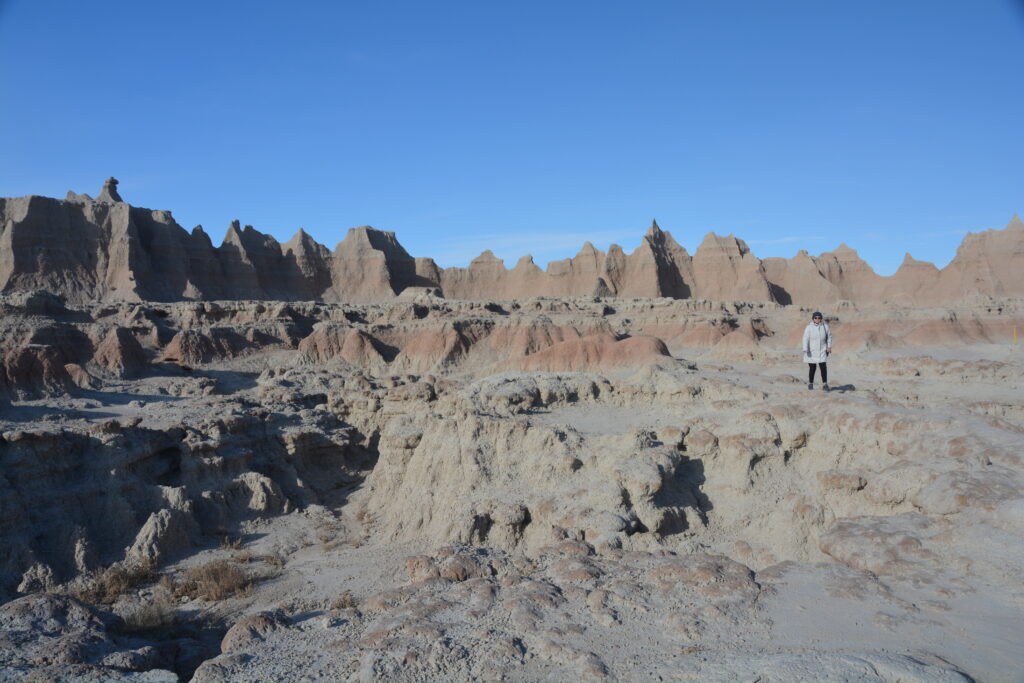
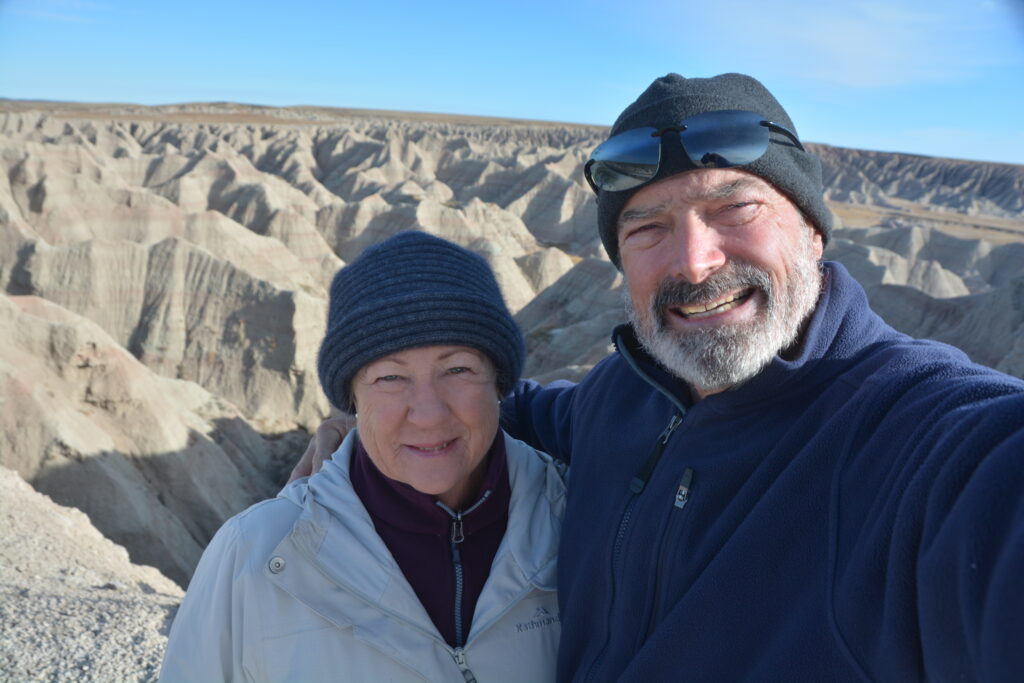
We followed a dirt track across the wilderness area of the park which was less developed. We saw buffalo, or bison if you like, pronghorn antelope, prairie dogs and a magnificent male long horn sheep which was very cool. We passed through the ghost town of Scenic (not very scenic) and ended up in Rapid City for fuel and supplies.
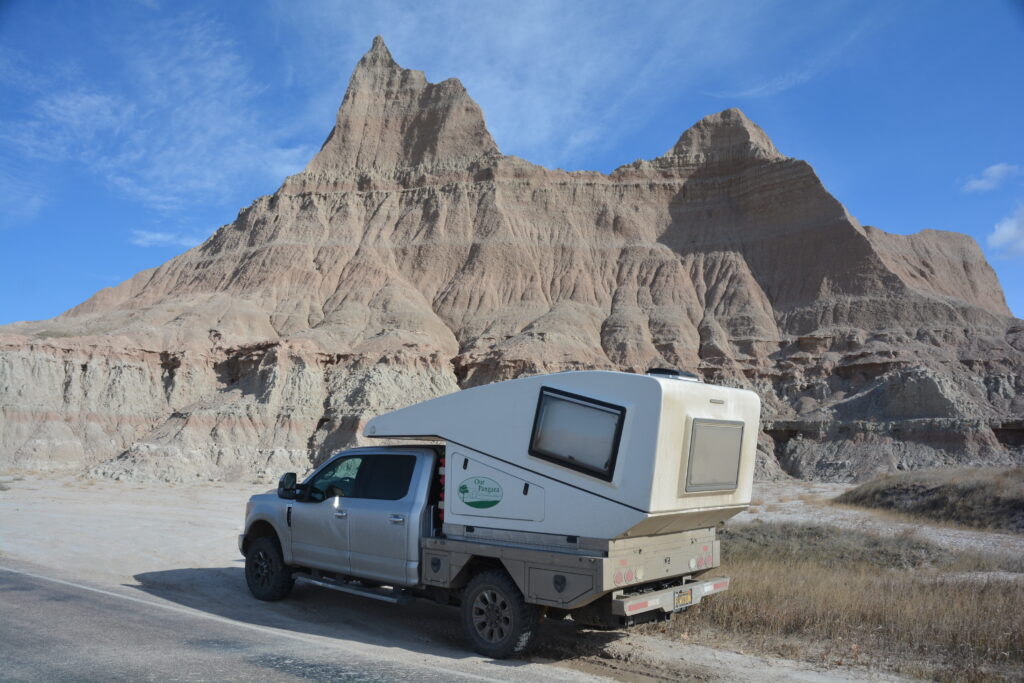
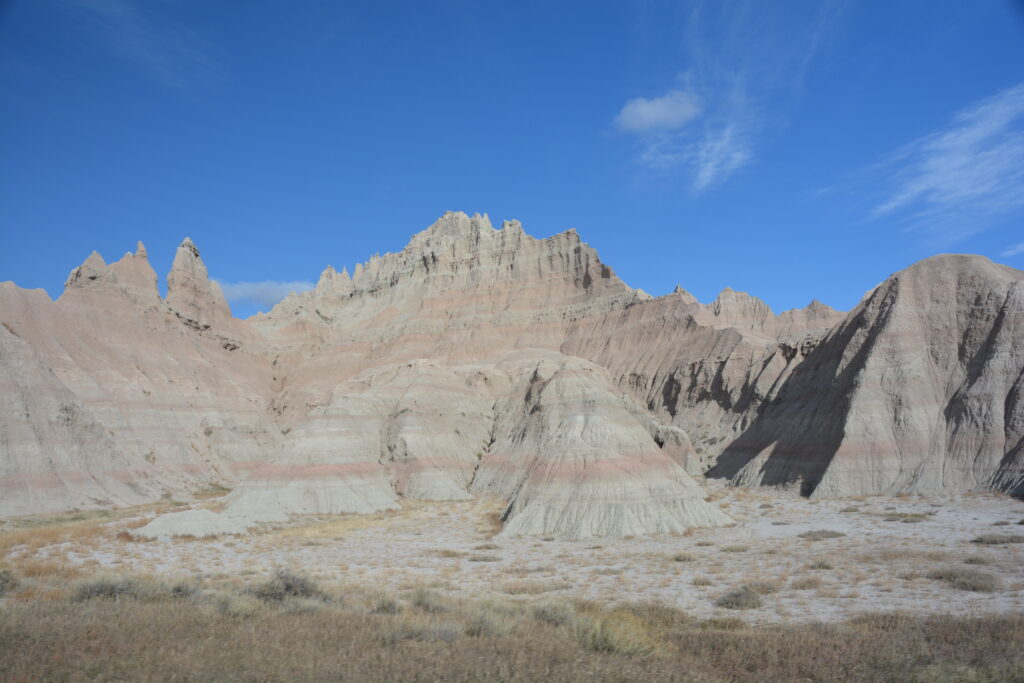
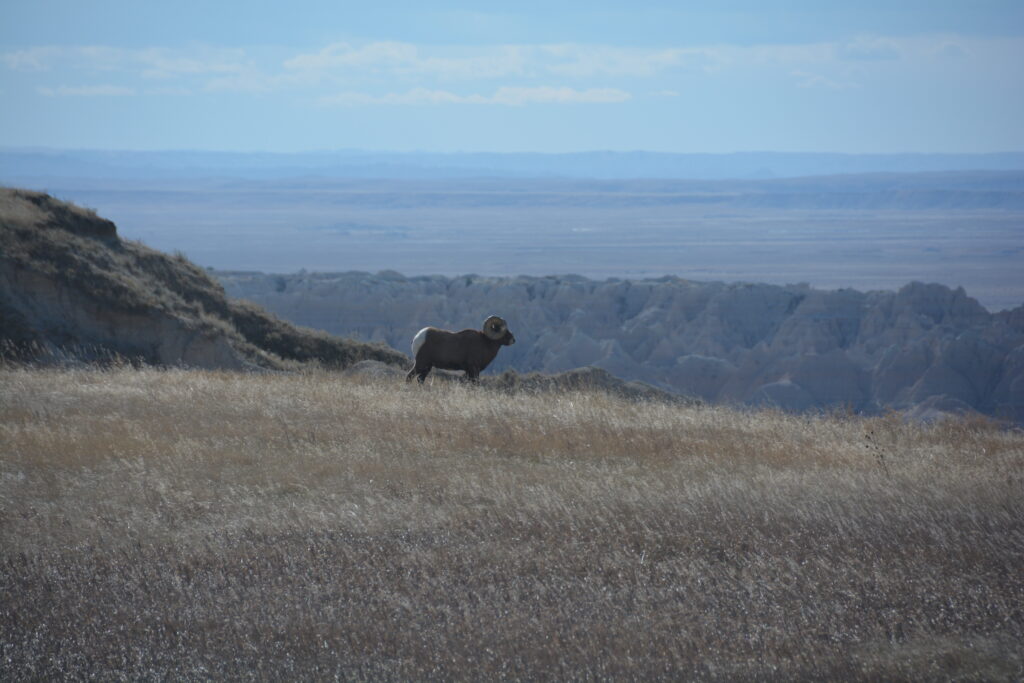
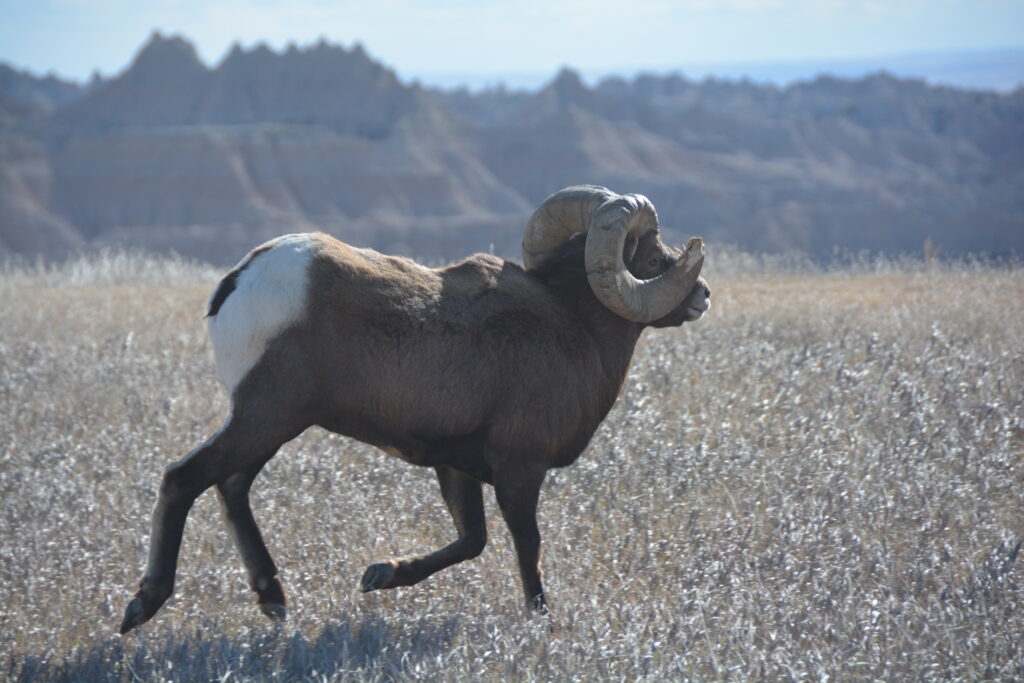

We then turned south into the Black Hill National Forest, magnificent stands of ponderosa pines covering the steep mountains, and ended up at one of America’s most famous tourist sites – Mt. Rushmore.
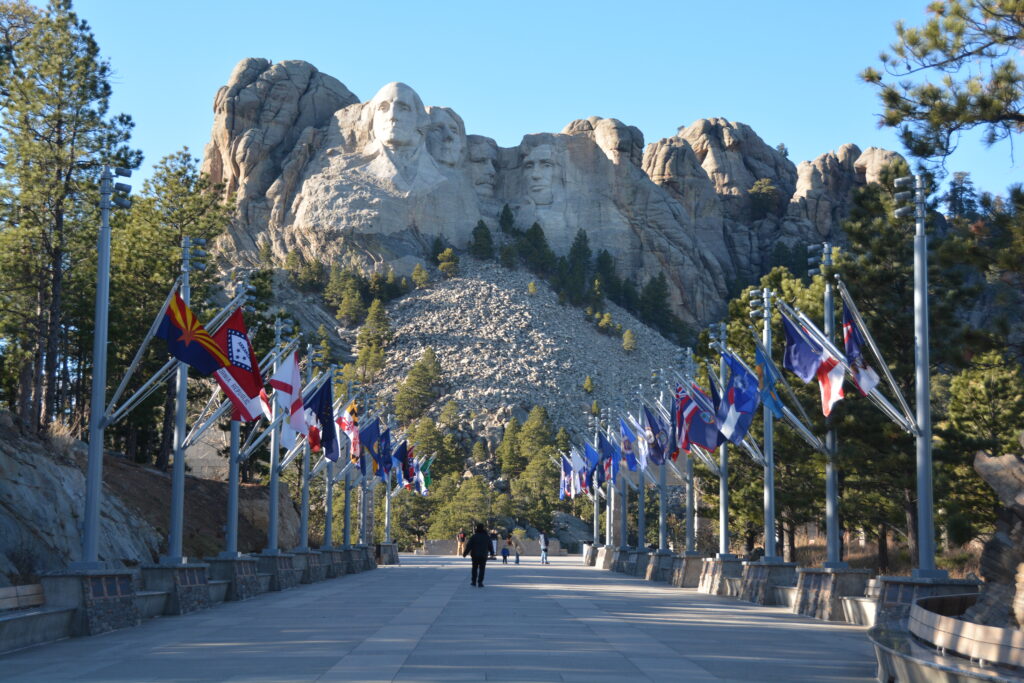
Mt. Rushmore – where the colossal heads of four of America’s most influential leaders are carved into a huge rock face, is an American icon without comparison. George Washington, Thomas Jefferson, Theodore Roosevelt and Abraham Lincoln cut magnificent presidential poses high above the viewing platform. Constructed between 1927 and 1940, it was an engineering marvel of it’s time and today is so popular the tourism infrastructure in the nearby town is almost sickening. But the site itself is absolutely stunning, a real treat to finally see it.
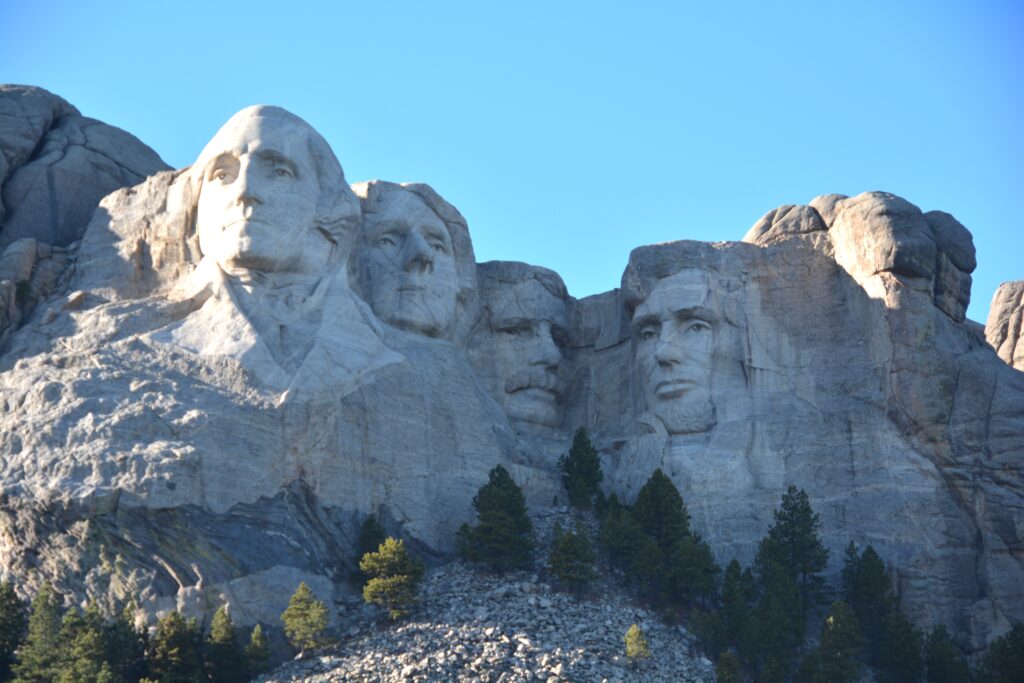
We had intended to see the similar-styled mountain carving of Crazy Horse, the famous Indian chief, which is partly carved into a nearby mountain face. But the outrageous entrance fees and waning light killed that idea and we headed for the national forest where we found a beaut site on a back trail at about 1,700 metres (5,600 feet), collected some wood, and settled into a freezing cold but wonderful night around the flames, coyotes providing constant background music.

We had one more target for South Dakota, as if everything we’ve seen wasn’t already enough, and that was Wind Cave National Park. Wind Cave was only the seventh national park in the US and protects one of the largest limestone cave networks in the world. Spelunkers have explored and mapped out an amazing 165 miles of caves and believe it is still only about 10% of the total cave network.
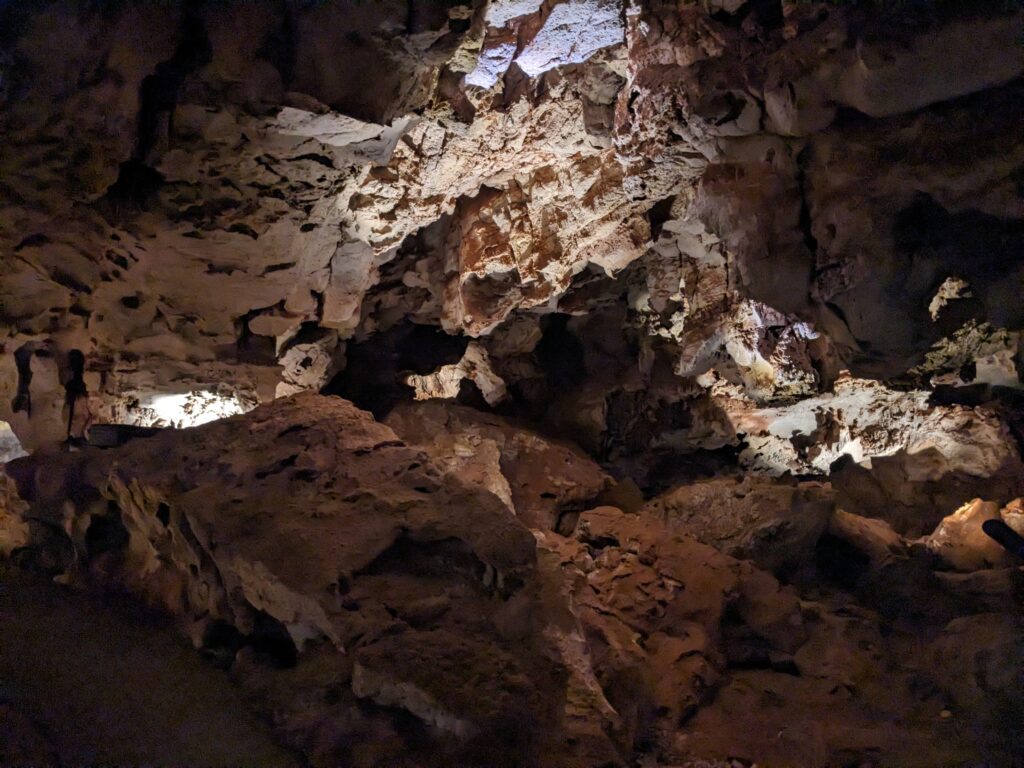
Julie and I are into caves and have seen some rippers in our day so we were looking forward to our tour of one of the sections. Wind Cave is a dry cave and was not formed by the flow of water so lacks the wonderful stalactites and stalagmites of a wet limestone cave but it still packed a punch and we had a great Ranger guide who overloaded us with interesting info on the cave, the park, the animals and the native Indians who first inhabited this fabulous land.
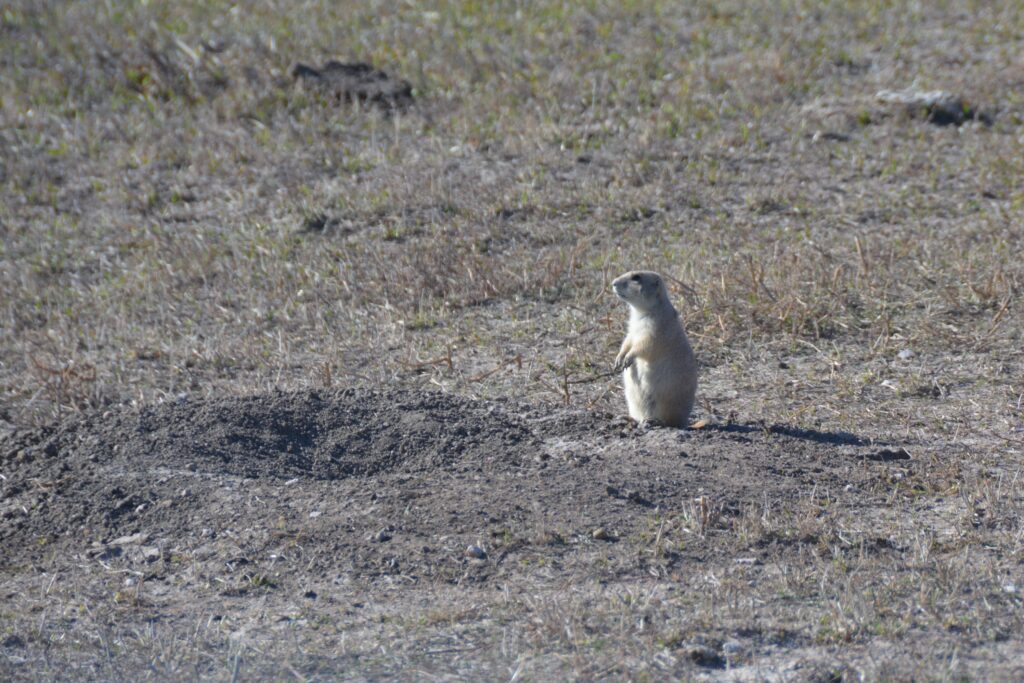
With great reluctance we finally left the Dakotas and crossed over into Wyoming, passing through the magnificent Black Hills National Forest and catching views of huge big horn sheep along the way. Wyoming has a stack to offer travellers, including the famous Yellowstone Park, but we were bee-lining it to our base in California which was still 1,500 miles (2,400 kilometres) away and we only had a handful of days to get there.
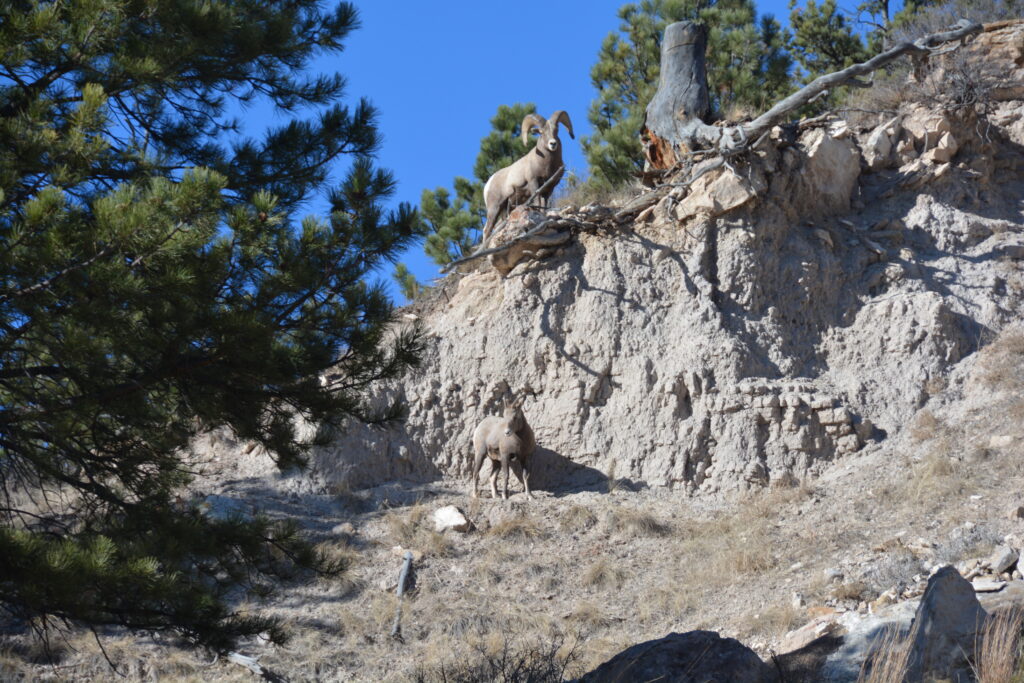
We crossed the endless expanses of Thunder Basin National Grasslands, which redefines the meaning of wide-open spaces, and after crossing the grasslands we managed to find a place to tuck ourselves away behind a hill and some trees for a quiet night.
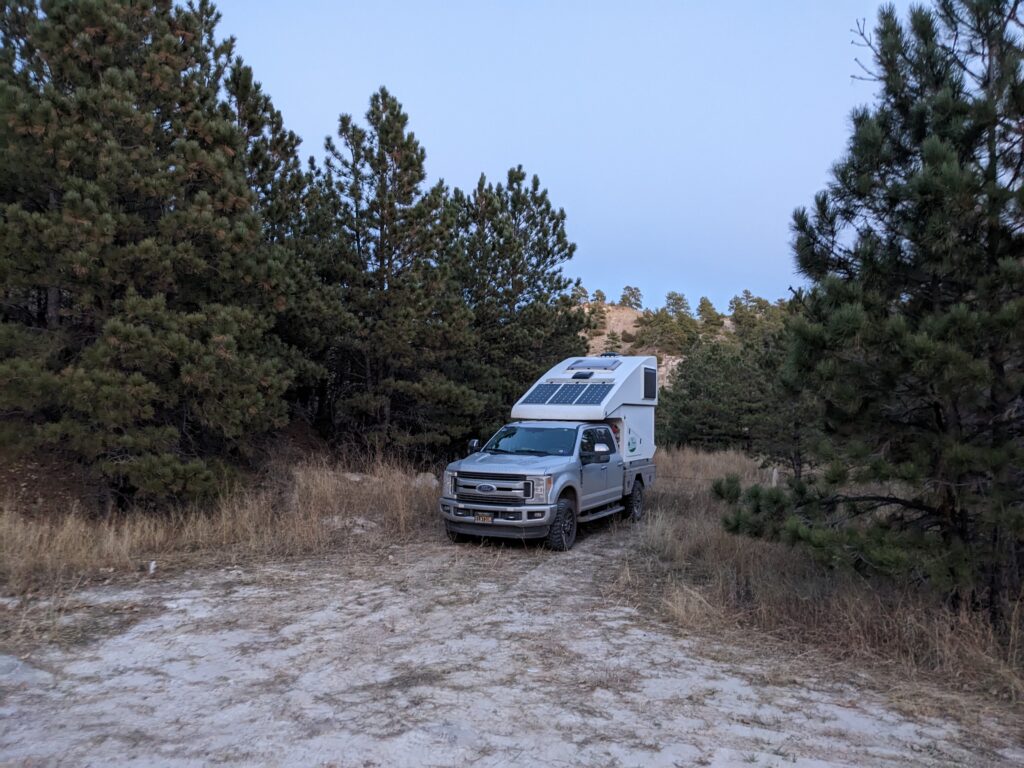
The next morning we changed our plans again, because we can, and decided to head a little northward to at least drive through Yellowstone National Park, if not linger there due to time constraints. Unfortunately the park is closed this time of year so we opted for a slight variation and set Karen, our occasionally reliable GPS, for Grand Tetons National Park.
A hunting and taxidermy store on our route provided memorable scenes.



To get to Grand Tetons we took up her offer to cut across a section of central Wyoming on remote dirt and gravel roads and were rewarded with one of the most spectacular drives we’ve done in ages. Across grassy plains, up and over rocky ridges, around carved buttes and across streams, this was a wonderful drive of Wyoming’s outback region on what they call a ‘Scenic Backway’. We had the entire two hour drive to ourselves and could have spent days there. The photos don’t do this region justice.
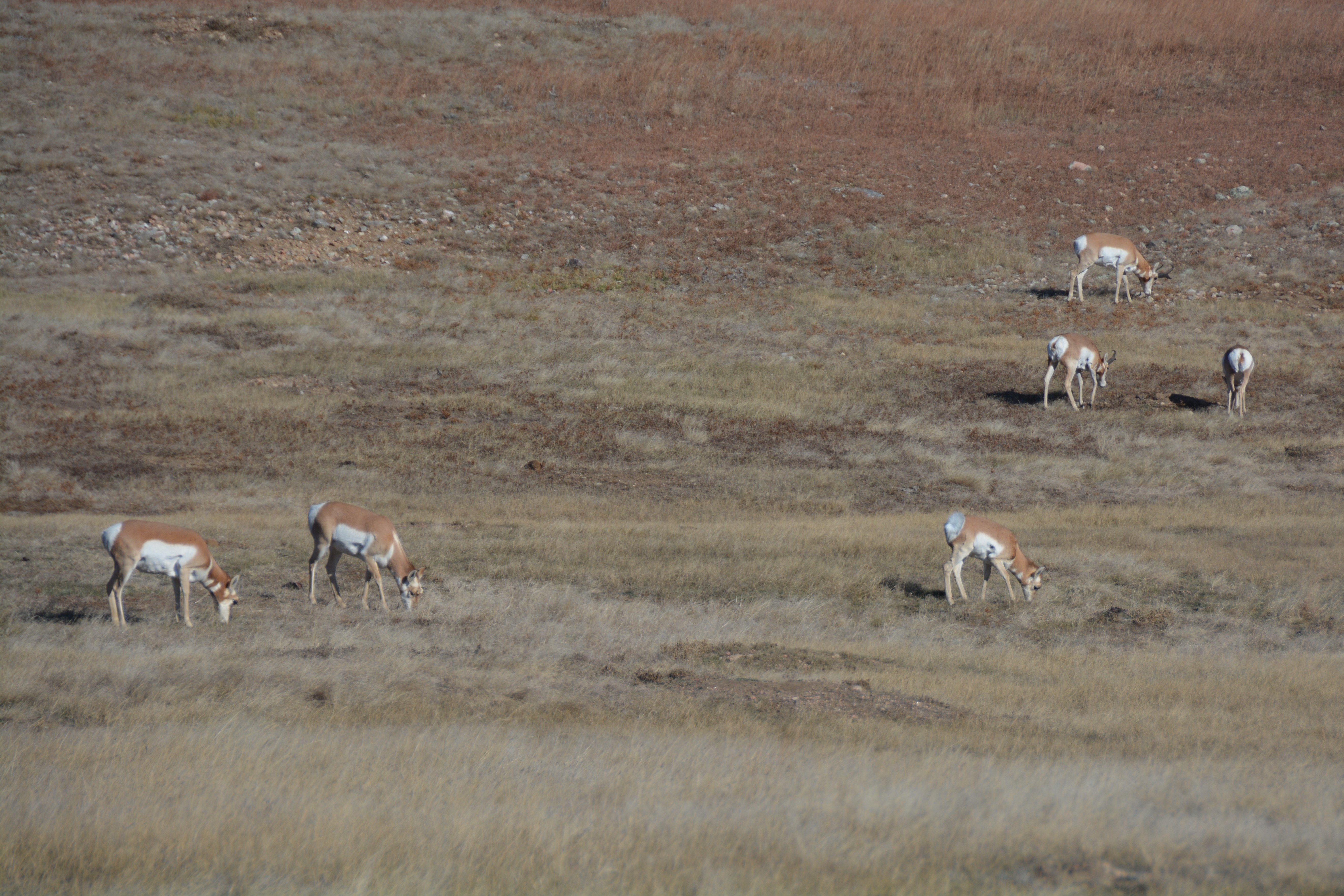
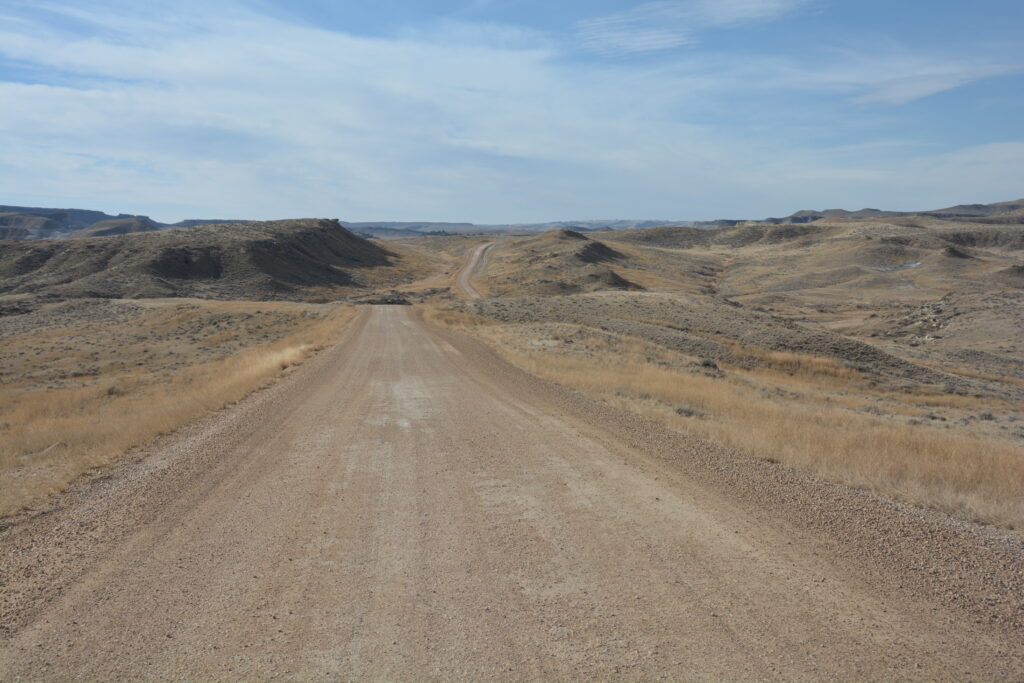
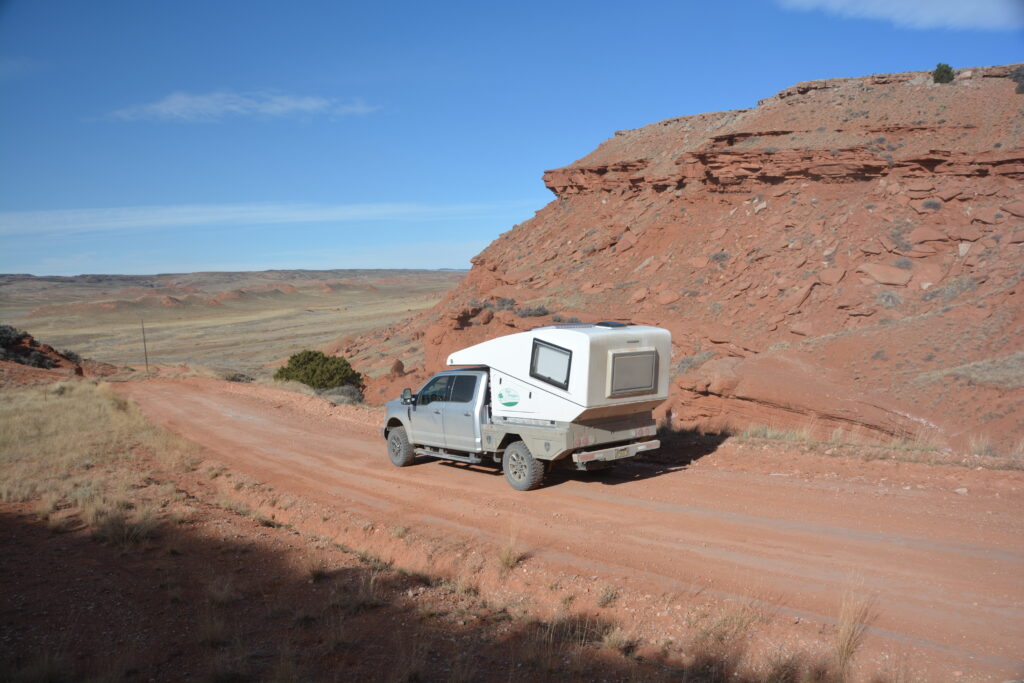
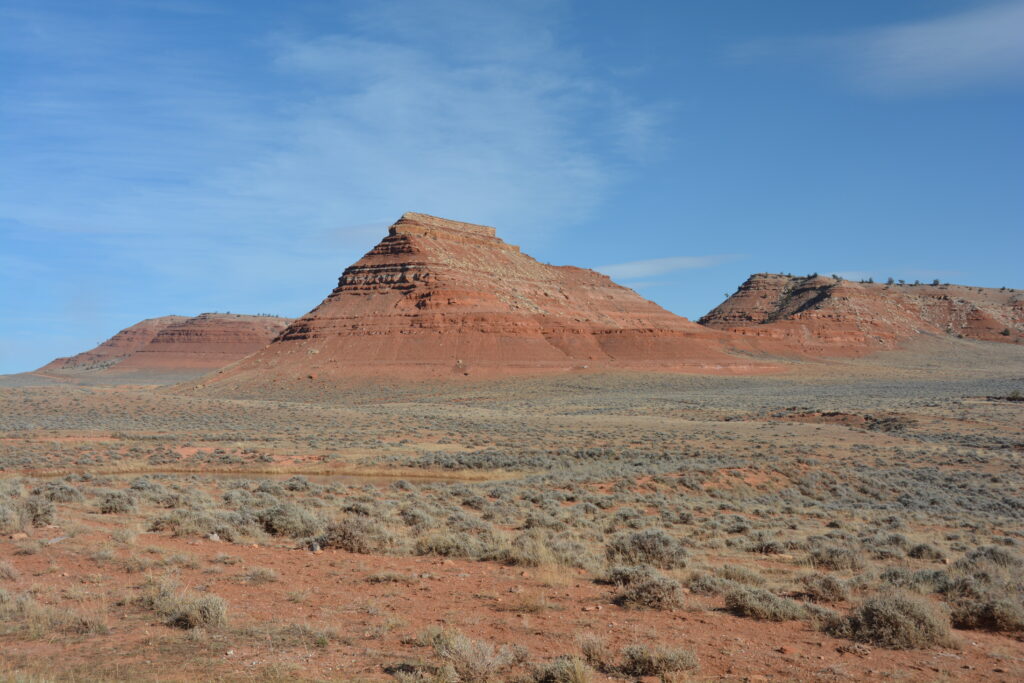
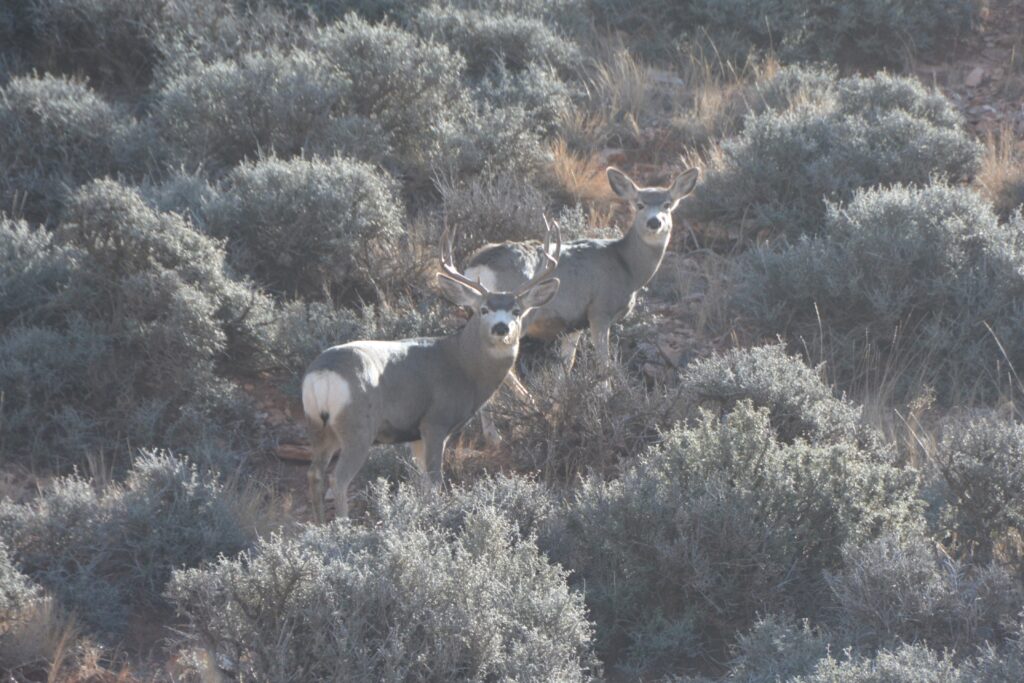
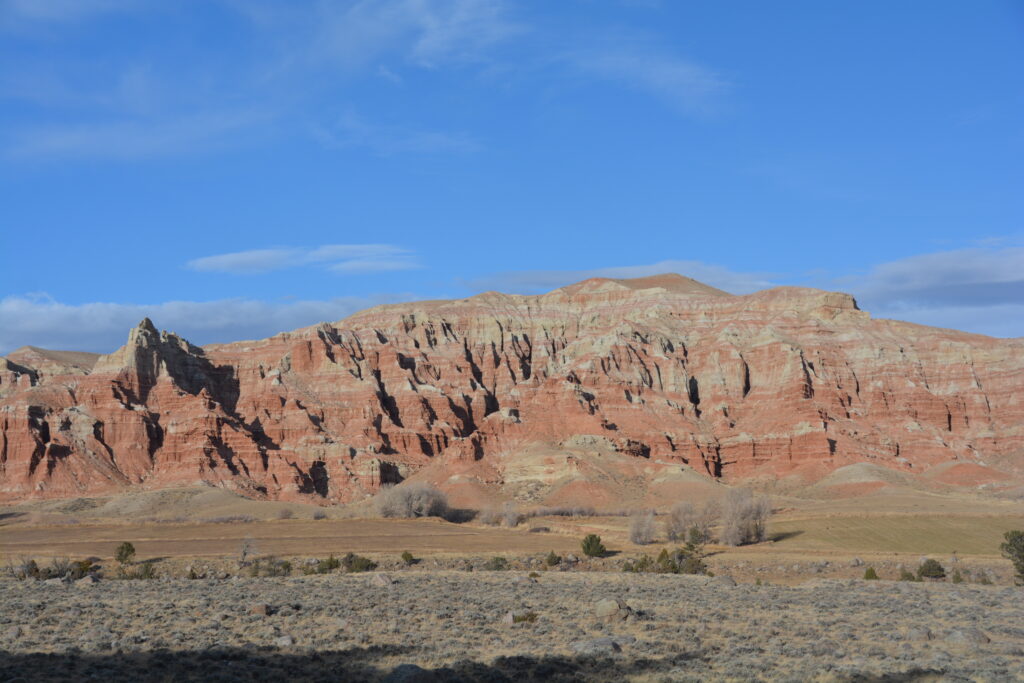
We finally hit the bitumen and headed up Highway 26 through Dubois and into what becomes the Rocky Mountains. We could see a ridge of snow-topped mountains to our west and eventually we winded our way up and into these beautiful mountains, the snow more than a foot deep on the side of the road. We crossed the Continental Divide at 9658 feet (2,945 metres – Mt. Kosciusko, Australia’s highest peak, is 2,228 metres) with mountains still soaring high above us. It was awesome.
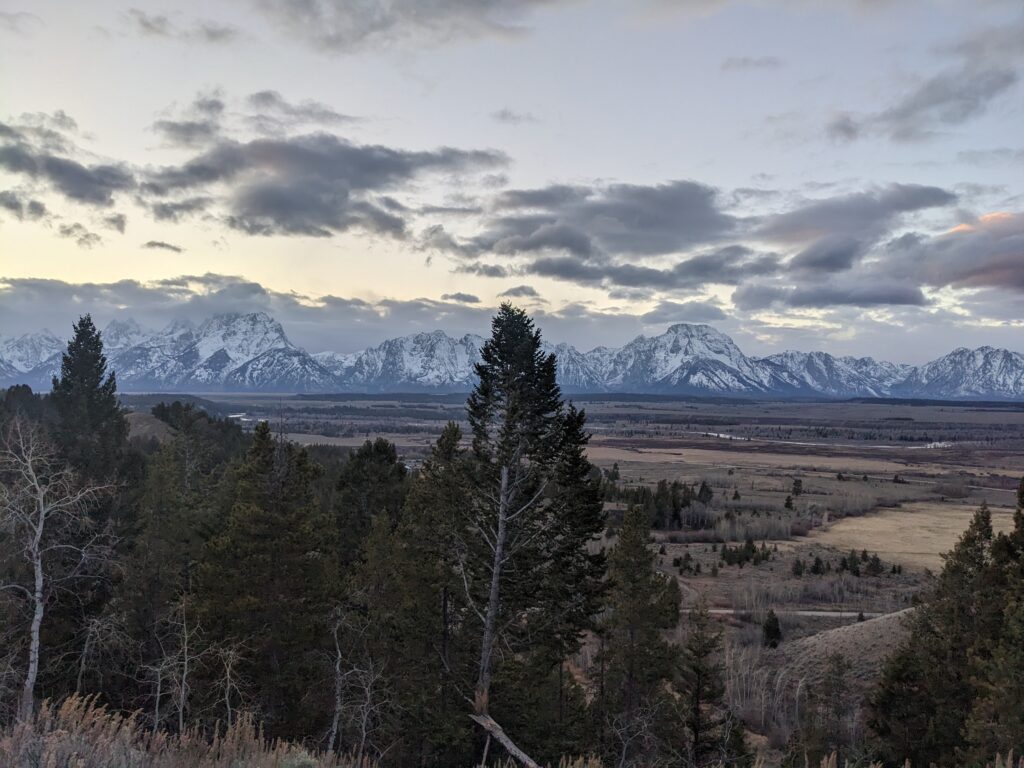
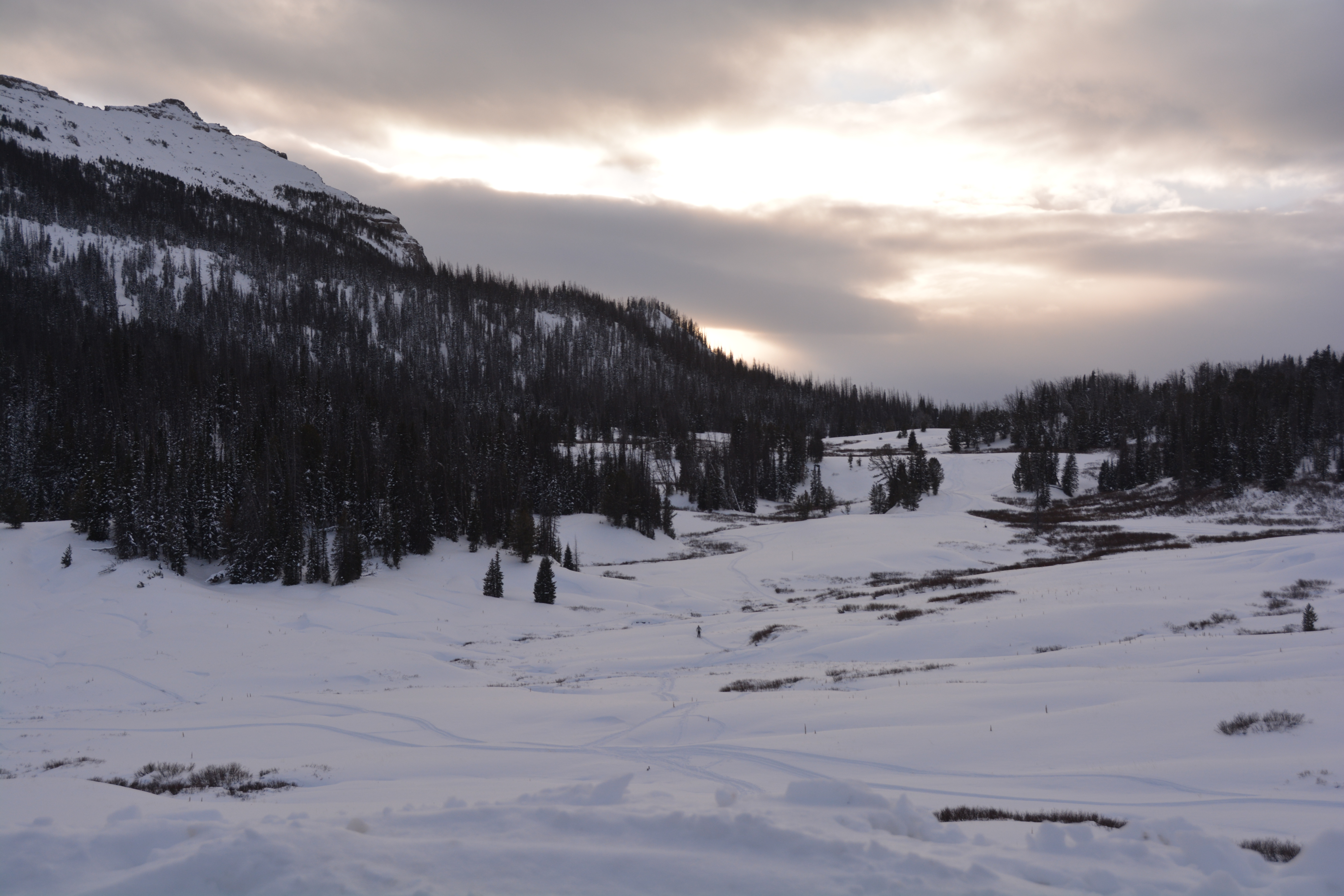
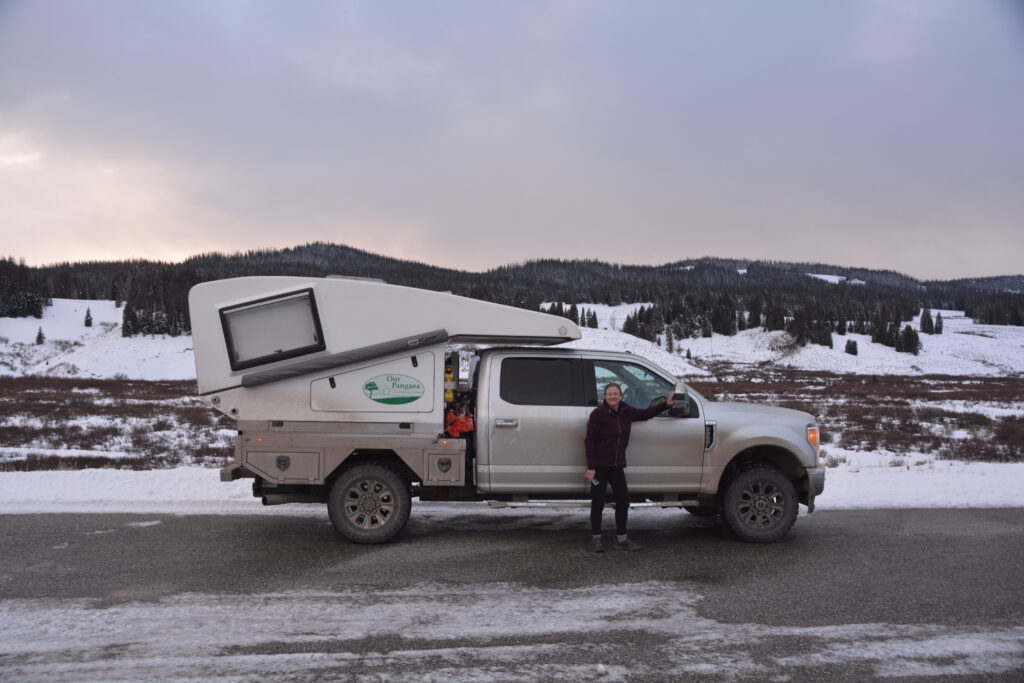
We dropped down into the valley called Jackson Hole with the Grand Tetons, the magnificent jagged snow-covered mountain range, filling our windscreen. It was just on dusk, the light was failing and the profile of the mountain range was just extraordinary.
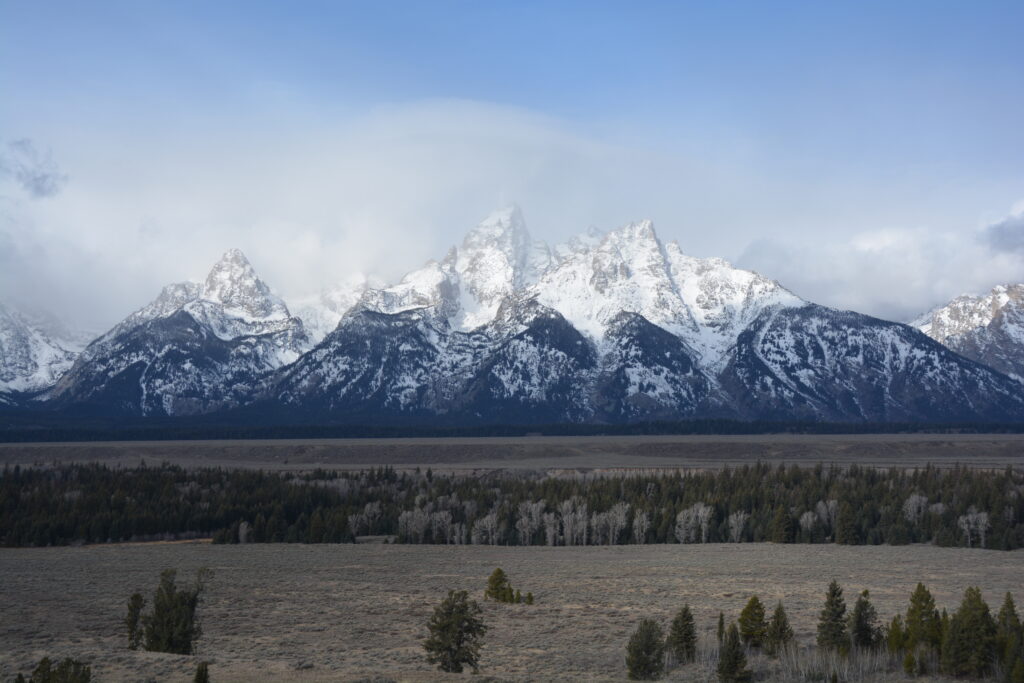
We camped that night up in the forest on an overlook with the Grand Tetons spread out in front of us, the temperature dropping, the fire swirling in the cold winds. We clinked our drinks to one of the best driving days on Follow the Sun. Just beyond words.
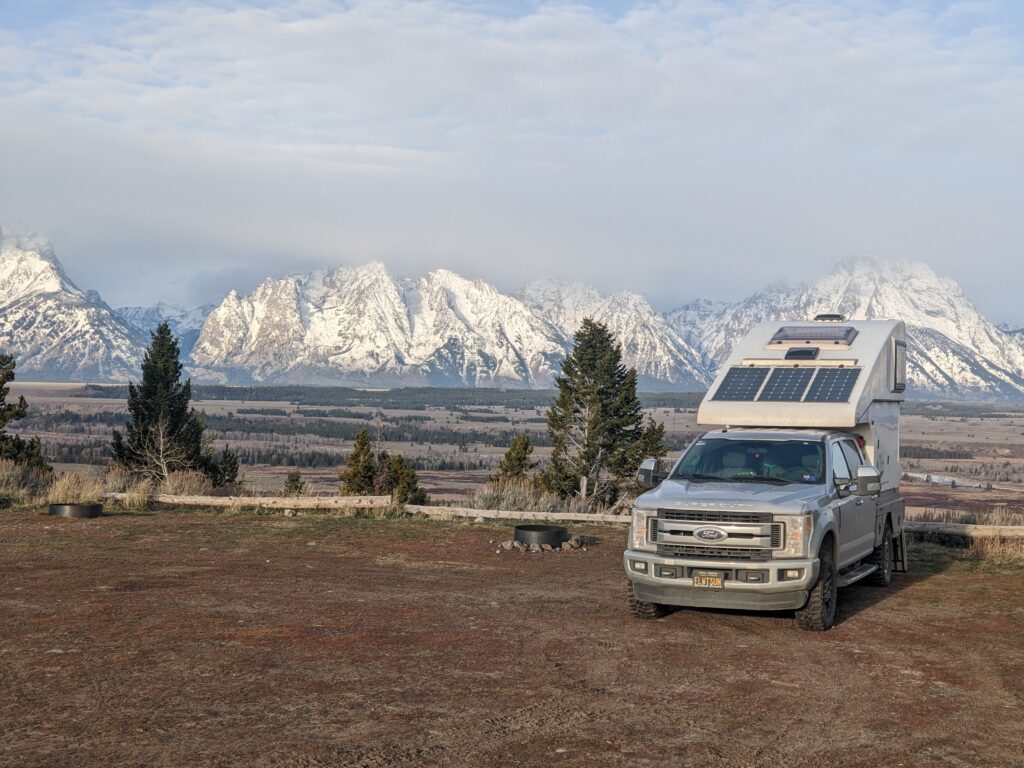
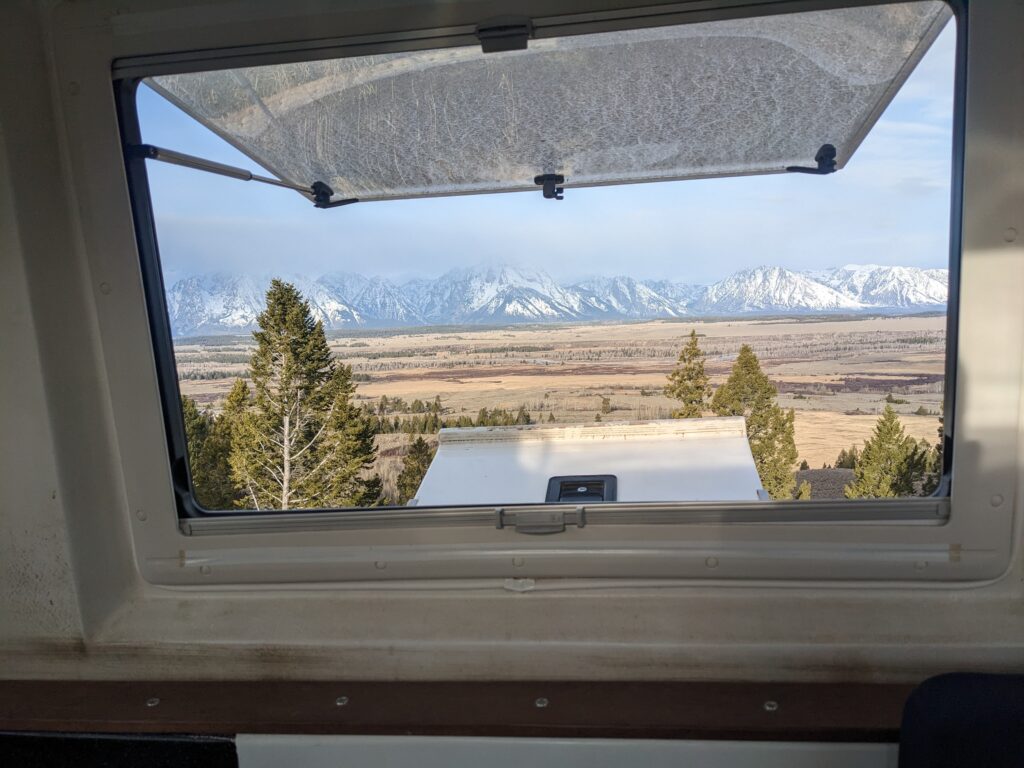
We had a very cold and windy night up on the overlook but the new day started with warm filtered sun on the jagged Grand Tetons. We drove down into Jackson Hole, the name of the valley that runs along the base of the famous Tetons, and headed south, stopping at one point for a short walk down to a beaver-dammed stream where we saw a monstrous male moose with his huge rack of antlers just lying in the grass enjoying the morning.
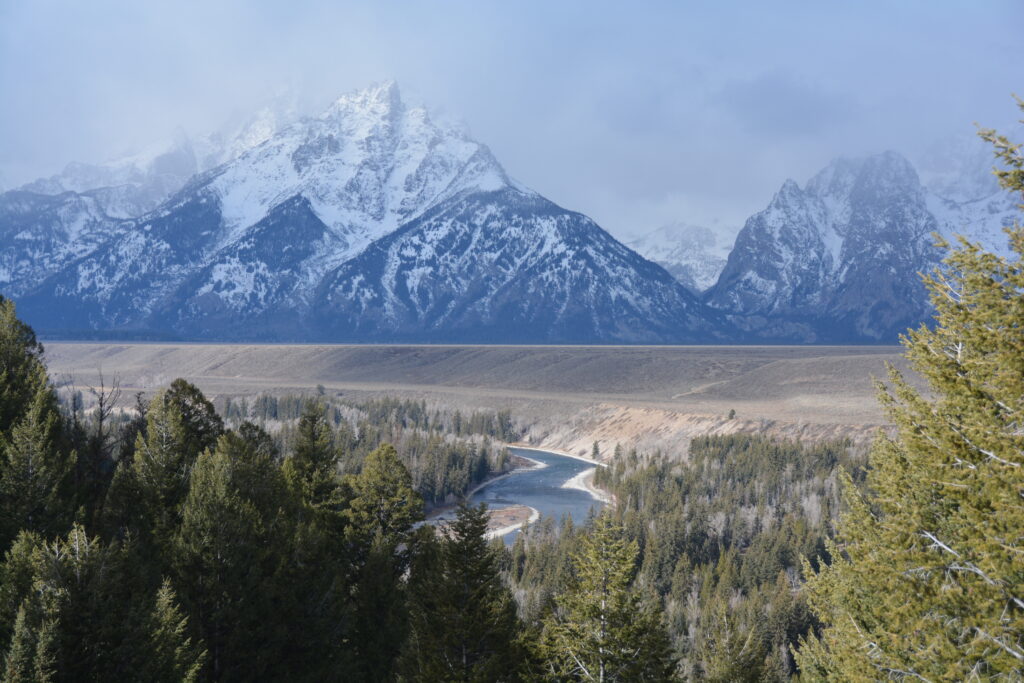
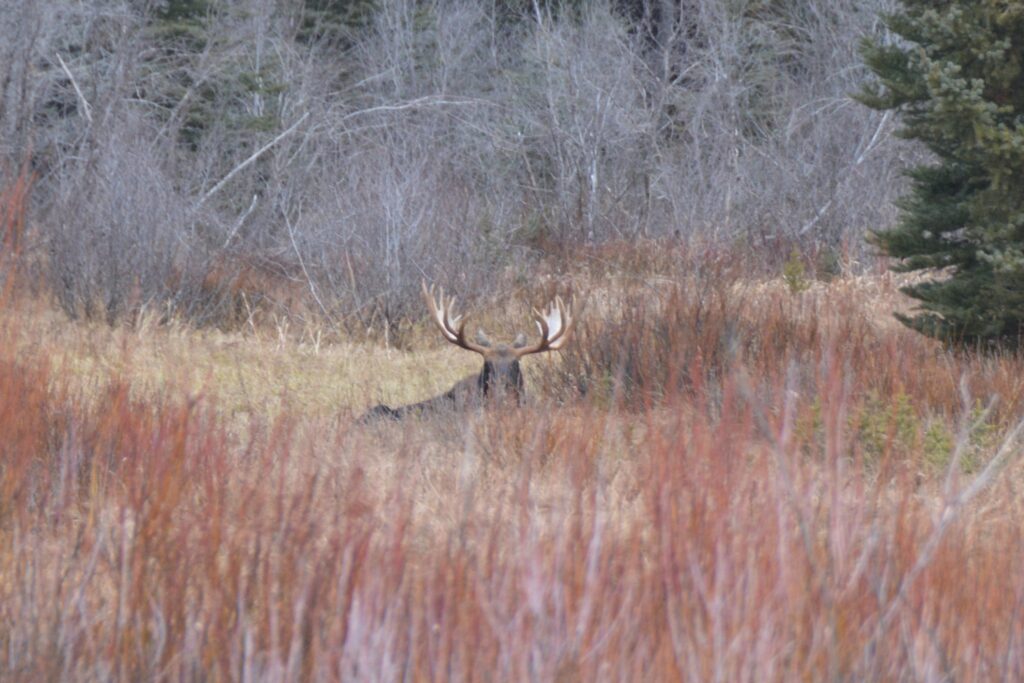
We parked up at a trailhead and spontaneously decided to do the 3 miles/5 kilometre walk up to Taggert Lake. This gently rising walk took us through the pine forest along a little stream until we hit the lake, fringed by a thin layer of ice and surrounded by wonderful snow-topped mountains all around. The Grand Tetons are truly grand.
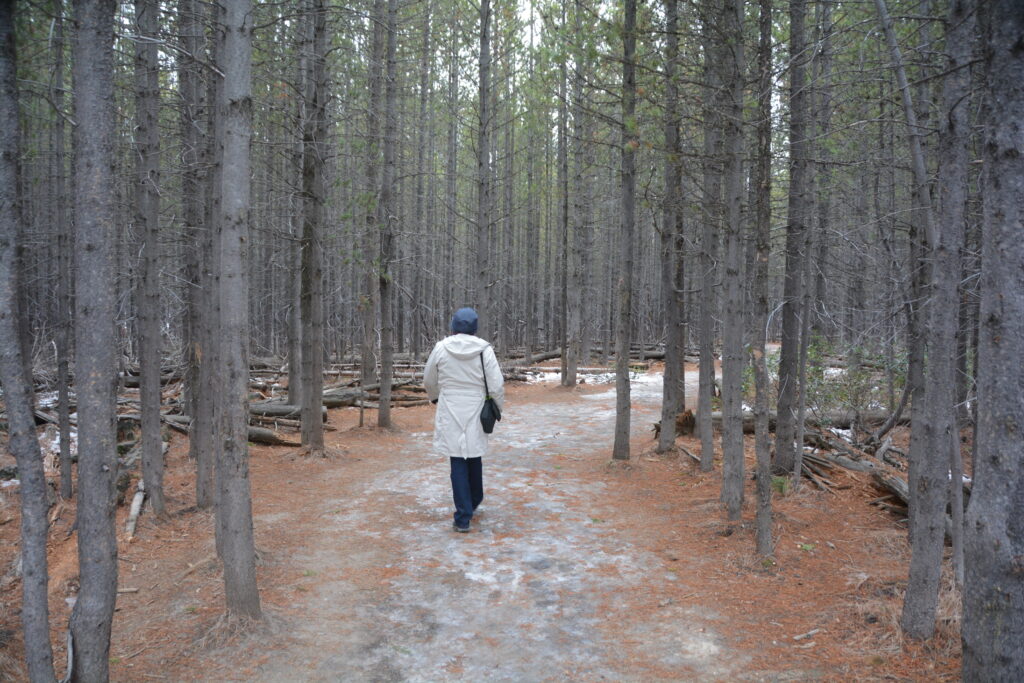
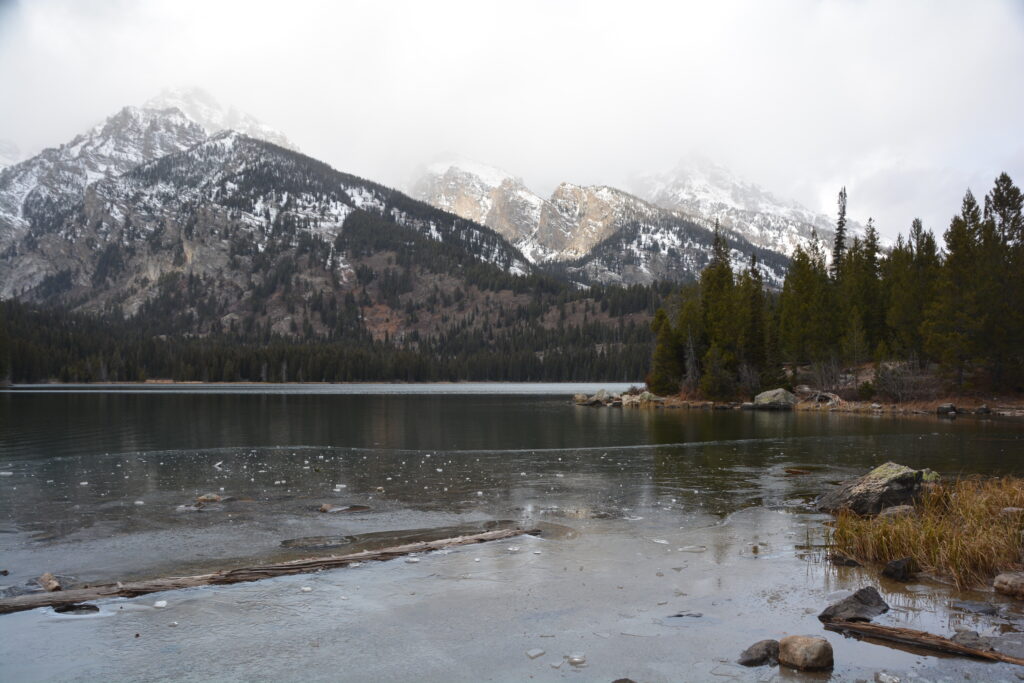
The beautiful little town of Jackson is an upmarket trendy enclave for all those with the bucks to pay local prices and those who want to see these wonderful mountains up close. And I mean up close – the local ski resort finishes right at the edge of downtown making it all very convenient during the ski season.
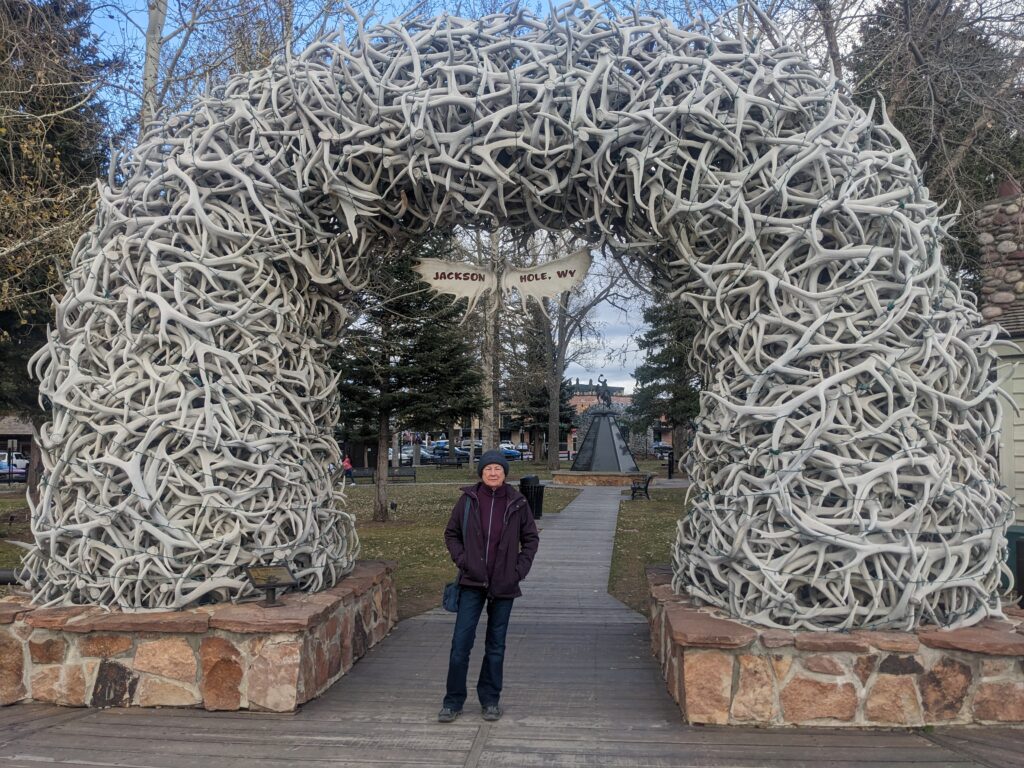
We lunched on pizza and explored a few shops before heading south out of town following the Snake River. We camped that night at a lower elevation under slightly milder conditions on the banks of the Salt River, the sun setting behind more beautiful mountains. Wyoming definitely grows on you.
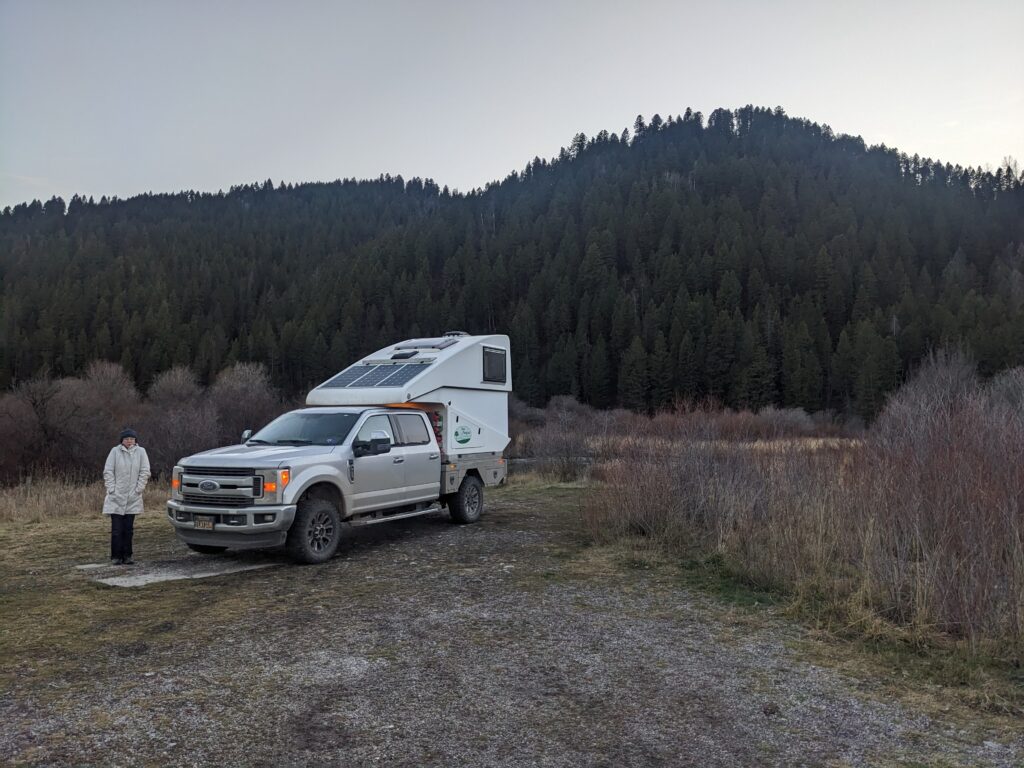
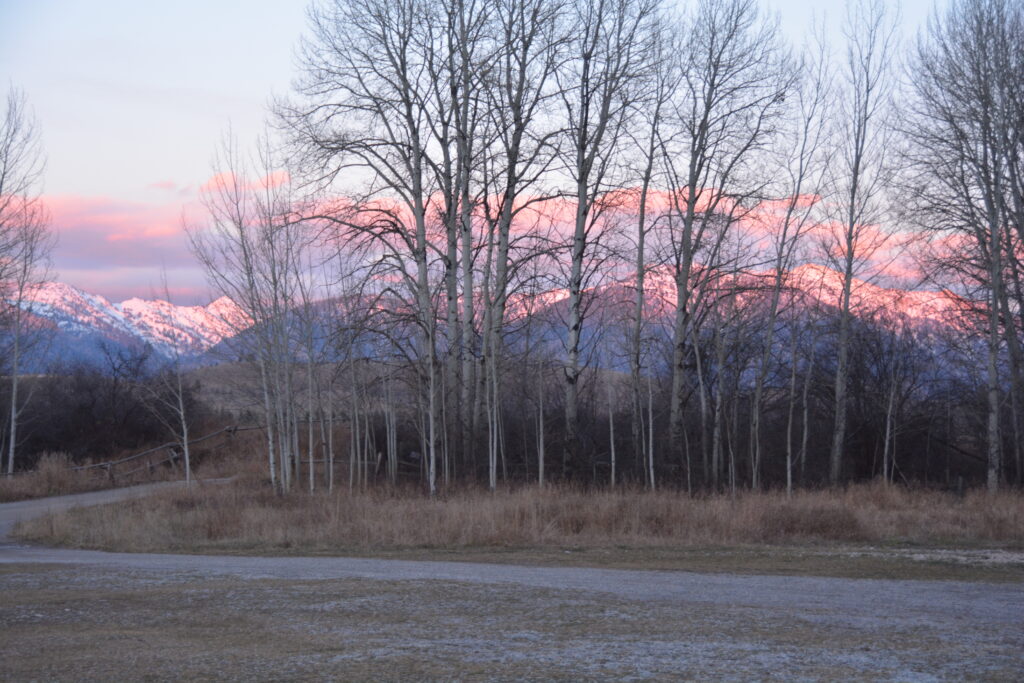
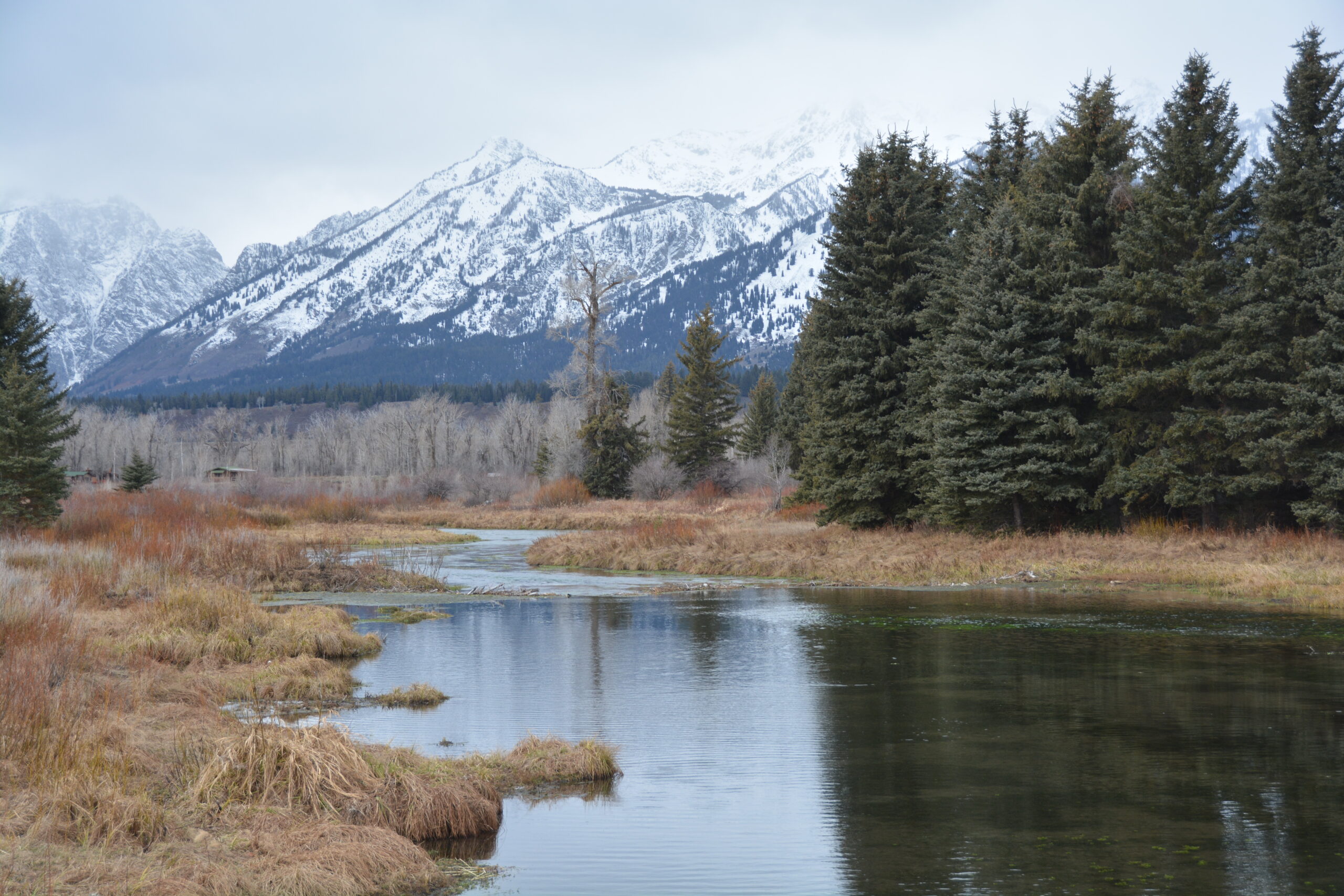
As I’m sure you’re both aware Emma and I very fond memories of Wyoming and the Grand Tetons in particular. Lovely to revisit through your words – and kick ourselves for not getting a Teton Hero Shot of Big Snomad!